GEARING UP [20101019]
I came home today, refreshed the deviation I submitted last night, titled "Aerial - I", and found a nice little note under the image stating that it was a Daily Deviation. This is my third Daily Deviation, now.
I just wanted to say thank you to all my watchers and to everyone who inspires me. You're all appreciated and I love you for your support.
It's been 6 months now since I've got my new CCD (astrophotography camera) and a top-of-the-line telescope. The new camera hasn't even been used, yet. It's depressing me to think how much money I spent on those toys and they're sitting there unused. The reasons behind the non-use are due to ridiculous weather, and, also, I am inundated with work at the moment, spearheading our Solaris 10 upgrade project (I'm a UNIX sysadmin) and encountering problems every step of the way. That project should hopefully wind up in late November, and, I don't want to do it again. Someone else can handle the headache next time.
Hoping to take a few days off in the next few weeks and travel to the bush to do some astrophotography. The weather will no doubt conspire against me, as it did in early September when I went to Albury/Wodonga for a star party and it rained the entire time. My notebook went for a swim in the rain and it's dead now. Trying to salvage everything off the old hard drive at the moment is another headache. The bad weather is due to an episode of La Ninã. Cloud and rain is expected to last well into 2011.
I am really looking forward to taking a break. A break for me means traveling with my camera, whether it be locally or overseas. I wish to visit the Pacific North-West of the US and/or Canada, as well as another trip to New Zealand, or a trip to central Australia. Having been born in this wonderful country, I regret not having seen all of it. Maybe time to do that now. Nothing makes me happier than capturing a pure landscape in pure light.
In other news, I'm kept busy with weddings and portraiture work. I love doing both, but, don't want to do either for too long. Anyone who does both professionally knows how tiring and stressful people photography is. You either get the shot, or you're permafry.
My web site is nearing completion; I work on it whenever I get a moment. I will let you all know in a journal entry all about it when it's live, so you can all rush there and purchase prints.
Thank you, all, once again.
Lots of love and all that good stuff,
H
A NEW HORIZON [20100303]

SBIG STL-11000M 35mm RESEARCH GRADE CCD
In recent times I had seriously been thinking of selling all my astrophotography equipment and moving on to greener pastures. Quite literally. I wish to expand upon my landscape photography.
I had gotten jack of the considerable amount of time that is wasted in waiting for the weather to clear. As an example, I wasted four days over the Christmas period having travelled out to a dark site, set up my equipment, and waited. Over a four day period, I did not see a single patch of blue sky during the day, and not a single star at night. It rained the entire time.
I have also had a gutful of the disgusting amounts of noise which are present in my most recent images. I'm not sure what's causing it (other than the heat and the way DSLRs perform so poorly in it); I haven't changed any of my image processing routines as far as pre-processing goes. Calibration, registration, normalisation, stacking, background gradient removal, logarithmic stretching, etc., is all the same.
I then thought about how much I had invested in my gear and the joy that it has brought me. I also thought long and hard about the potential monetary loss in selling it all now. This stuff isn't cheap, but, punters expect everything for nothing when it comes time to sell it.
I needed something that would rekindle my passion.
It was time to make a move...
Within a month I will be the proud owner of this benchmark research grade cooled monochrome imaging monster. What does that even mean?
Cooled: the CCD cools to about -50 degrees Celsius below ambient temperature. On very hot nights, I can also utilise water cooling to drop the temperature even further. Essentially, the cooler the sensor, the cleaner the image.
Monochrome: the camera is black and white and one must image through filters for true colour.
Some features:Although, it will now take me possibly four nights to capture a single object (because of having to image through luminance, red, green, blue and hydrogen alpha filters), the end result will be worth it. This is a self-guiding camera which means that it has a secondary sensor built into the system which is used as a guide camera. This means I can now do away with my guidescope and guide camera and have the one system do both the imaging and the guiding -- I will effectively be reducing the weight on my mount which will make it perform even better than it already does. When I do get around to using narrowband filters to produce the Hubble colour palette (sulphur II, hydrogen alpha and oxygen III filters), I will have to purchase the remote guide head which plugs into the camera and takes over the duty of the in-built guide camera. The reason why I'll have to do this is because the narrowband filters block an immense amount of light and the guide camera may not be able to successfully pick up a star in a reasonable exposure time (less than 5 seconds to ensure the mount tracks appropriately).
- 35mm format, 11 Megapixel Class 2 CCD.
- Built-in 657 x 495 TC-237H Guiding CCD for Self-Guiding and AO control.
- Port for optional Remote Guide Head with a second 657x495 TC-237H Guiding CCD.
- Built-in 5-position, 50mm filter wheel.
- Triple dew heaters for external dew control.
- Built-in 12VDC voltage regulation for field operation direct from battery
- Universal power supply for 90-240VAC operation.
- Custom dust-proof, water-proof, crush-proof, Pelican carrying and storage case.
- CCDOPS, CCDSoftV5, TheSky version 5.
Hopefully after I've wrapped my head around working with the actual imaging and pre-processing software, you will see that my astrophotographic images will take on a new dimension.
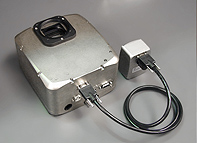
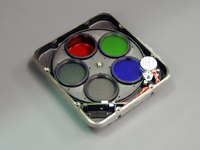
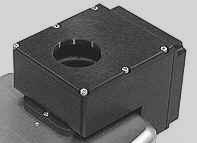
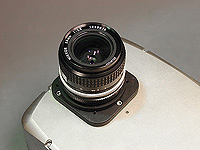
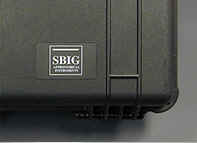
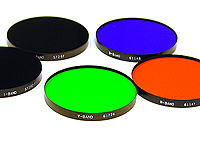
Because this puppy weighs a considerable amount more than a standard full-frame DSLR, I've had to invest in a heavy duty focuser.

STARLIGHT INSTRUMENTS FEATHER TOUCH FTF3545B-A FOCUSER
I've ordered this 3.5" diameter beast of a focuser for my 5" triplet apochromatic refractor. The focuser on the refractor is less than ideal for carrying heavy payloads and so I bit the bullet and ordered this. I figured whilst I'm at it, I'll purchase it with the temperature compensation digital focus options. Materials expand and contract with temperature shifts. This is a critical issue with astrophotography as the slightest change in ambient will cause the focus to shift. My worst enemy is out of focus stars -- you could waste an entire night's worth of imaging because of focus shifts due to temperature or focuser sag. With the temperature compensation option, there is a sensor inside the focuser which measures ambient and you train the focuser where it should be for a certain temperature. After a 3-degree shift in temperature, you refocus. It then learns by how much the focuser should shift to accommodate a tight star image on the sensor. My understanding is that it can also accommodate focuser sag when imaging at zenith, because the software can be programmed to re-focus the guidestar after every single exposure has been taken. What this all means is that I can sit at my table when I'm imaging and let the focuser monitor the temperature and ensure that my stars are tight.
In other news, I've also bought an Epson 78xx series printer and can now do my own professional quality 24"-wide prints. If there's anything in my gallery that you'd like to have professionally printed, just leave me a message on the deviation or send me a note.
DESTINED EVOLUTION: 5D MARK II - FIRST LIGHT [20090212]
These shots were taken especially in low light to try and give the autofocus and high ISO performance a run for its money in trying conditions. I am very, very impressed. The aim was to present the images as they came out of the camera; as a result these images have had little to no processing done on them. The first image was shot with the 17-40mm f/4L, the next five were shot using the 200mm f/2.8L II USM, and the last two, again, were shot using the 17-40mm f/4L.
Something to keep in mind is that except for the last, the rest of these images were taken handheld as I forgot to bring my quick release plate. The majority of the high ISO shots here would have been impossible to take using my previous equipment.
I even managed to make use of the HD (1920x1080) video capabilities using the 17-40mm f/4L. I put my camera on my friend's tripod (took the last image) and then just turned the video feature on. Just as I did, a swan decided to paddle past, and then a second one. It was just wonderful!
I have since done a pre-wedding shoot, shot a wedding, and a birthday party. I am absolutely ecstatic with the performance of this wonderful full-frame camera. I am glad to be finally putting to full use my excellent L-series glass collection. I have a portrait session this weekend and another wedding the week after. My expectations are for the equipment to pay itself off relatively quickly.
Click on an image to view a larger size (all images will load in one browser window -- I'm too lazy to create individual HTML pages for each photograph.)
DESTINED EVOLUTION [20090201]

PREPARATION [20081103]
Well, I've just registered a domain. I will start development on a site to run a photography business (freelancing work to start with) and also to showcase/sell my astrophotography, as well as my terrestrial stuff.
A major project at work has just seen completion. I've spent the last four weekends at work, along with a few colleagues, implementing the project. Thankfully, it is now done and dusted. I'll have weekends free, for the time being, to get back into my astrophotography.
Here's some pictures of my current widefield imaging setup (without any cameras, cables, etc) until more toys arrive.
Click on an image to view a larger size (all images will load in one browser window -- I'm too lazy to create individual HTML pages for each photograph.)
IT'S BEEN A WHILE [20081010]
Yes, it has.
I'm about to purchase some new equipment and will be throwing myself back into my astrophotography, very shortly. If you read the description of my Alnitak image, you'd realise that I lost all my previous data, so was a bit bummed. The only way to resolve this is to get back out again and shoot some more.
So, what's in store? A Canon EOS-5D Mark II. Though, this will primarily be used for terrestrial imaging, I will occasionally point it towards reflection nebulas and open and/or globular clusters; being the types of objects they are, I won't be missing out on any hydrogen alpha wavelengths and will use my trusty Canon EOS-350D for the diffuse stuff.
Also, a new short tube refractor for autoguiding. I will use my ED80 refractor for the time being for doing "deep" space until I purchase a 10" RC-type telescope. Then, I can go really deep.
I'll also be splurging on some more L-series Canon glass. Yum.
So, what's kept me at bay? A raise in responsibilities at work and study that I've been doing in my spare time (which isn't all that much); I'm doing a SCSA (Sun Certified System Administrator for the Solaris 10 Operating System). I love UNIX.
I have been very tawdry on replies. My apologies to all those people who've added comments, favourites and sent good vibes my way. I'll get back to you, soon.
In the meantime, here, have some Paris, France. I shot these earlier this year. I will be adding more as time goes on. Feel free to critique and comment on these images in this journal entry.
Click on an image to view full size (all images will load in one browser window -- I'm too lazy to create individual HTML pages for each photograph.)
HUMBLED
By two great events, nonetheless.
Last Friday afternoon I had the utmost pleasure of attending a meet and greet with Mike Portnoy, the drummer for Dream Theater. He is well-regarded as one of the greatest drummers in the world. Do yourself a favour and watch this for an example of his wizardry. I had photographs taken with him, and, got my CD liner notes for Metropolis Part II: Scenes from a Memory signed (across the lyrics of Finally Free, no less), as well as above Mike's photograph on the liner notes to Images and Words. I also had the DVD cover slip of Score signed.
Later on in the evening, I went and saw G3 live in Sydney. It was the single most greatest night of my existence. To see John Petrucci (Dream Theater) live was a dream come true. If that wasn't enough, Steve Vai and Joe Satriani also played individual sets in the evening. They then all came together on stage to have a mega-jam. I can't put into words what I experienced that night, suffice it to say that you can imagine what happens when three of the world's best guitarists get on stage. Mike Portnoy drummed for John Petrucci's set. After John had finished playing, Mike ran to the microphone and said, "Thank you so much, hopefully we'll see you next year with Dream Theater," at which point the crowd went wild. Dream Theater has been around for 20 years but they've never been to Australia. I will no doubt see them in all their concerts on the eastern seaboard.
Well, that's the first event taken care of; the second is the following, which happened earlier this evening:
Hi Humayun,
I've just seen your Large Magellanic Cloud picture. Fantastic!
Would you be interested in seeing it published in Australian Sky & Telescope magazine? I'd be keen to publish it.
Cheers,
__________________
Greg Bryant
Editor
Australian Sky & Telescope
My dream was to get published in a magazine, and, that too, has now been realised. He is also interested in publishing my other images, too.
In other news, my Losmandy G-11 has arrived in Australia. I just have to make the final payment and it will be shipped to me.
I guess, all I can say is, brace yourselves for humbling deviations of the Universe in which we live in, to grace your deviantWATCH pages, soon.
UPDATE
I sold my equipment and now I feel empty.
Truth be told, I pushed my equipment as far as I could take it. The periodic error on the LX90 was disgusting to say the least; even with an autoguided set-up I was having a lot of problems with overcorrection and losing guidestars. Of course, it didn't help that the guiding software I was using was rubbish, too.
I have a new Losmandy G-11 with Gemini en-route from the United States.

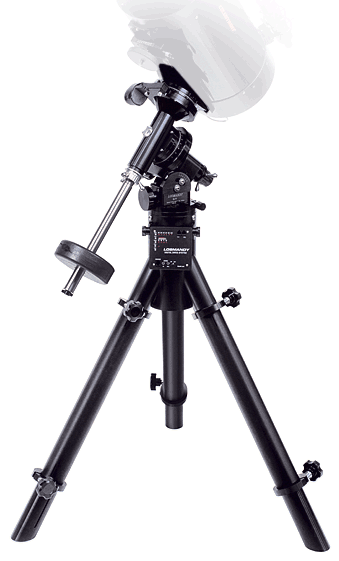
Losmandy G-11
I can't wait.
I'm going imaging this weekend at Lake Bathurst, where I shot my NGC 2070 (Tarantula Nebula in Dorado) image. I will be making use of a 5" Borg F/5.3 apochromatic refractor mounted on a Takahashi EM-200, and probably guided with an SBIG STV.
I will be reshooting my Pleiades image as I'm not 100% satisfied with it.
Scroll down for a new test picture.
I am so pleased to report that on the 24th of June, 2006, my recent deviation, Antares in Scorpius - Mk II was selected by hesitation as a Daily Deviation Feature. Thank you to the many people who viewed the image, as well as my other deviations and left me with so many nice comments, notes and favourites. A big thank you must go to Beachrockz4eva for suggesting it in the first place.
WORK IN PROGRESS AND/OR TEST IMAGES







M6 (The Butterfly Cluster)
Single JPG F/10, 65 second, ISO-1600, prime focus sub-exposure
Pre-processing: none
Post-processing: slight levels and curves adjustment
Yield: approximately 1 minute

M8 (The Lagoon Nebula)
Crop of kappa-sigma stack of 30, F/6.3, 60 second, ISO-400 sub-exposures (no flat frames)
Pre-processing: dark frame subtraction; calibration; registration; kappa-sigma stacking; logarithmic stretching
Post-processing: black/white points; levels
Yield: approximately equivalent to a half-hour long exposure

M45 (The Pleiades)
Crop of single JPG F/6.3, 120 second, ISO-1600, prime focus sub-exposure
Pre-processing: none
Post-processing: slight levels adjustment
Yield: approximately 2 minutes
Note: Field curvature is quite apparent as the Meade Series 4000 F/6.3 focal reducer I'm using isn't of good quality

M20 (The Trifid Nebula)
Kappa-sigma stack of 37, F/10, 45 second, ISO-1600 sub-exposures
Pre-processing: dark frame subtraction; flat frame division; calibration; registration; kappa-sigma stacking; logarithmic stretching
Post-processing: black/white points; levels; curves
Yield: approximately equivalent to 28 minutes of exposure

M22 (The Sagittarius Cluster)
Crop of kappa-sigma stack of 27, F/7.0, 30 second, ISO-400, prime focus sub-exposures
Pre-processing: dark frame subtraction; flat frame division; calibration, registration; kappa-sigma stacking; logarithmic stretching
Post-processing: black/white points; levels; curves; colour balance; slight unsharp mask
Yield: approximately equivalent to 14 minutes of exposure

The Alnitak Region: The Flame Nebula and The Horsehead Nebula
Kappa-sigma stack of 3, F/7.5, 600 second, ISO-800 sub-exposures
Pre-processing: dark frame subtraction; flat frame division; calibration; registration; kappa-sigma stacking; logarithmic stretching
Post-processing: black/white points; levels; curves
Yield: approximately equivalent to 30 minutes of exposure
Note: The image is extremely noisey as this is the combination of only 3 exposures and because my camera is insensitive to the 6563 angstrom (656.3 nanometre) hydrogen alpha emission wavelength
Note: the diffraction spikes in the M6, M8, M45, and Alnitak images were artificially recreated using 30-pound fishing line fastened (as a cross) to the primary corrector plate housing. You can never have enough diffraction spikes; classical-looking stars are divinely elegant.
Now for something completely random. Here is an image taken at Wentworth Falls in the Blue Mountains in New South Wales. This image was taken in December, 2005.THE BLACK ART OF ASTROPHOTOGRAPHYPeople often wonder how much work is involved in producing breathtaking images of the heavens. I thought I'd make use of the long weekend and place some images in my journal which show RAW images taken off the camera's sensor (converted to JPG for web) and the final image produced after the long and arduous task of pre- and post-processing. This journal entry will showcase one of my images.
In addition, this journal entry is not a how-to (which some people have asked for); that is something which is going to come later on down the track. However, what this entry will display is akin my previous entry which displayed M20 - the Trifid Nebula - before and after some minor processing.
So, enough with the rambling; let's get into some eye candy.The Pointers and CruxPRE-PROCESSING
1. Light Frames
Light frames are photographs of the subject or target in question. They're called light frames, simply because they capture light.
For this target, I shot two sets of 20 images. One at ISO-800 and one at ISO-1600.
a. Single (1 of 20) RAW 30 second ISO-800 sub-exposure
b. Single (1 of 20) RAW 30 second ISO-1600 sub-exposureIf you look carefully in the second image, you'll notice three diagonal lines; two up the top, and a rather short one towards the bottom left. You may be wondering what these are. In actual fact, these are satellites which I just so happened to capture during this thirty second sub-exposure. These particular satellites are the COSMOS communications satellites. There's no sign of these diagonal lines in the final image. This is because the stacking process identifies anomalies, or outliers, in the image data and subtracts them.
2. Dark Frames
Dark frames are photographs of nothing; they are photographs taken with the cover of the telescope in place or the lens cap in place. Dark frames actually capture thermal noise, dark currents, atmospheric effects on the sensor, hot (saturated) pixels as well as stuck pixels. The point of taking dark frames is to subtract this random noise from the light frames.
Dark frames are sensitive to temperature, and therefore it is advisable to take them immediately after capturing light frames; at the same exposure length and ISO setting as the light frames. Therefore, for this target, I had to take two sets of dark frames; one set of nine at ISO-800 and another set of nine at ISO-1600.
a. Single (1 of 9) RAW 30 second ISO-800 dark frame
b. Single (1 of 9) RAW 30 second ISO-1600 dark frameNotice the (pink) amp glow in both images towards the bottom right of each frame? This glow is due to electrical noise in the sensor or heat generated within the mechanism. If we don't subtract dark noise from our light frames, we will be left with noise and glow at the same location in the light frames as where the noise occurs in the dark frames. Note also the change in intensity from ISO-800 to ISO-1600.
3. Flat Frames (Lights)
Flat frames are photographs taken of either the twilight sky or of a flat, evenly-illuminated object, such as a wall. Flat frames capture optical train aberrations such as vignetting, dust motes or particles on the lens, sensor or telescope's primary corrector plate. Flat frames are taken at ISO-100, at the same F/ratio as the light frames. The exposure length is dependant on the illuminated object; typically, the aim is to reach 1/2 to 2/3rds peak histogram display on the output of the camera's LCD display. For any given illuminated object, this could range from 1/8th of a second, all the way up to 1 second.
a. Single (1 of 9) RAW 1 second ISO-100 flat light frameNotice the vignetting effect towards the right of the frame? The image is somewhat darker on the edge than towards the middle. This is because the outer edges of the sensor are 20% less sensitive to light than the middle of the sensor. If you look very carefully, towards the mid-top area, there are two or three small dark spots. These spots were caused by dust motes on the lens and dust particles on the camera's sensor. If vignetting and dust spots aren't removed at this stage, they detract from the final image.
4. Flat Frames (Darks)
For exactly the same reason as having taken dark frames for our light frames, we also have to take dark frames for our flat frames. Again, at the same exposure length and ISO setting as our flat light frames.
a. Single (1 of 9) RAW 1 second ISO-100 flat dark frameAfter having acquired all this data, what do we do with it? My workflow (for this example) is as per the following steps, beginning with the ISO-800 data:Once this calibration process is complete, I then register (align) the images so that they're all in the same orientation relative to each other. I then split each of the 20 images into their respective red, green and blue channels, perform a kappa-sigma stack (add the images together without clipping (saturating) data) and save the resulting sum of each of the red, green and blue channels. Next, I rejoin the tricolour sums into the one RGB image. I then crop the image so that any non-overlapped portions can be removed (think of two rectangles placed on top of each other, but not perfectly; the parts which are not overlapping are redundant); if they're not removed they affect the post-processing stage; set my black and white points, set the RGB balance, remove light pollution gradients (if evident) and perform a levels stretch. I save the resultant data as a *.PSD file and begin the post-processing component of the black art.
- Create a flat master dark frame by median combining the 9 flat dark frames
- Calibrate the 9 flat light frames by subtracting the flat master dark frame* (created in step 1) from each flat light frame
- Create the master flat frame by median combining the calibrated (done in step 2) flat light frames
- Create a master dark frame by median combining the 9 dark frames
- Calibrate the 20 light frames by subtracting the master dark frame* (created in step 4) from each light frame and divide the resultant data by the master flat frame** (created in step 3)
*This removes any hot pixels, thermal noise, etc., in the flat light frames **This removes optical train aberrations such as vignetting and dust particles
I repeat this process for the ISO-1600 data, except for step 3.
That is the pre-processing stage complete. That's a lot of information to absorb!
POST-PROCESSING
5. Final Composite
After pre-processing in IRIS is complete, I have a kappa-sigma stacked set of ISO-800 image data, as well as a set of ISO-1600 image data. I then kappa-sigma stack these two together. Many hours after adjusting levels for each colour channel, applying multiple curves layers for each colour channel, tweaking hue, saturation, and colour levels, I present the final composite ready for framing and re-sizing for the Internet.
a. The final pre- and post-processed composite:
((40 light frames MINUS master of 18 dark frames)
DIVIDED BY (master of 18 flat light frames MINUS master of 18 flat dark frames))
kappa-sigma stackedComments and critique welcome.
June Journal Feature Appearances
Jezhawk jezhawk.deviantart.com/journal…
EtherealMaybe etherealmaybe.deviantart.com/j…
Ailidh ailidh.deviantart.com/journal/…
Kel-----Bel kel-----bel.deviantart.com/jou…
skatetopunk skatetopunk.deviantart.com/jou…
Japheree japheree.deviantart.com/journa…
tedgushue tedgushue.deviantart.com/journ…
WolfPrincess33 wolfprincess33.deviantart.com/…
Hector42 hector42.deviantart.com/journa…
DeepKick deepkick.deviantart.com/journa…
JackOfSpades jackofspades.deviantart.com/jo…
ying-temptra ying-temptra.deviantart.com/jo…
osyris osyris.deviantart.com/journal/…
This makes thirteen journal features for this month! Not a bad effort, that. Never in my wildest dreams did I imagine that I'd appear in over ten features in the one month let alone one! Thank you to Jezhawk, EtherealMaybe, Ailidh, Kel-----Bel, skatetopunk, Japheree, tedgushue, WolfPrincess33, Hector42, DeepKick, JackOfSpades, ying-temptra, and osyris for allowing me to grace their front pages.
--
H
"For everyone must see that astronomy compels the soul to look upwards and leads us from this world to another." -Plato (427-347 B.C.)
--
Member of:

































